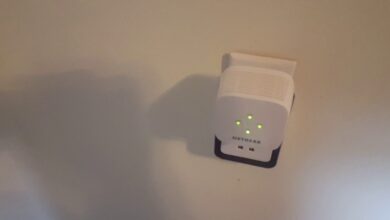Mastering Painting Projects with a Flex Sprayer

The ancient art of painting has seen substantial development over time. The methods, instruments, and supplies used in painting have evolved, from prehistoric cave drawings to cutting-edge canvas works of art.
The Development of Painting Equipment
Let’s take a moment to admire the evolution of painting tools and techniques through the years before we dig into the world of flex sprayers.
Brushes and Rollers
Traditionally, rollers and brushes were used extensively in painting. While rollers were used for greater surface areas, brushes were employed for fine detail work. Although these techniques are still extensively employed today, they can be time-consuming and can not give certain projects the smooth, even finish that is needed.
Spray Guns
An important development in painting technology was the invention of spray guns. Spray guns produce a uniform, expert finish by atomizing paint into small droplets and launching them onto the surface.
Sprayers without Air
For both professional painters and DIY enthusiasts, airless sprayers changed the game. These sprayers create a fine mist of paint by applying high pressure through a small aperture in the paint and a hydraulic pump. Sprayers that use air alone are effective and excel at swiftly covering huge areas.
Flex Sprayers
The next development in painting tools will be flex sprayers. They provide adaptability, control, and a professional finish by combining the best elements of airless sprayers with conventional spray guns. Flex sprayers are perfect for a variety of tasks, including painting fine trim and furniture as well as walls and ceilings.
Knowledge of the Flex Sprayer
Understanding the fundamental parts and workings of this novel instrument is crucial to mastering painting assignments with a flex sprayer.
Pumping System
A flex sprayer’s pump system is its engine. The paint is pressurized and its flow is managed by this mechanism. Depending on the size and planned use of the sprayer, the pump’s power and capacity change.
Spray Gun
The flex sprayer’s portable element is the spray gun. It has a trigger that manages the paint’s release. The spray gun is connected to the pump by a flexible hose, which makes movement simple.
Tip and Nozzle
The spray pattern and paint flow rate are greatly influenced by the nozzle and tip. To achieve different finishes, from tiny details to broad coverage, numerous nozzle and tip combinations are available.
Pressure Management
The majority of flex sprayers have pressure control settings that let you alter the pressure and paint flow. This function is essential for getting the finish you want and reducing overspray.
Compliance of Materials
Numerous coatings, including latex paint, oil-based paint, stains, and varnishes, can be applie with flex sprayers. Use the right materials for the job you are working on.
Advantages of a Flex Sprayer
Why go for a flex sprayer when painting projects are involve? Here are a few strong benefits:
Effectiveness
Flex sprayers are very effective for tasks like painting walls and ceilings because they can swiftly cover huge areas. They are also adept at handling complex detail tasks.
Consistent Finish
Flex sprayers’ atomized spray creates a smooth, uniform finish without brush strokes or roller stippling. This is very useful for giving surfaces like cabinets and trims a professional appearance.
Flexibility
Flex sprayers are adaptable equipment that can be used for a variety of painting activities. A flex sprayer can be use to work on interior or external surfaces, furniture, or fences.
Less Exhaustion
Using a flex sprayer can greatly lessen physical effort and exhaustion when compared to conventional painting techniques.
Painting Project Mastery: Useful Advice
After discussing the fundamentals of flex sprayers, let’s look at some useful advice for mastering your painting tasks:
Set up your Work Area
A good painting project requires careful planning. Remove any impediments, drop cloth floors and furniture, and mask off any sections you don’t wish to paint. Additionally important is ventilation, particularly when working inside.
Select the Appropriate Nozzle and Tip
From narrow to wide, different nozzle and tip combinations produce different spray patterns. To discover the optimal fit, refer to the manufacturer’s suggestions or conduct tests on a test surface.
Test Surface Practise
Practice using the flex sprayer on a scrap piece of material or a discrete region before beginning your major project. This enables you to gain a sense of how the sprayer works and modify your method as necessary.
Keep a Safe Distance
It’s important to keep the spray gun’s distance from the surface at the proper level. This distance is typically 12 inches, although it can change based on the coating you’re using and the manufacturer’s guidelines.
Conclusion
For both pros and DIY enthusiasts, mastering painting jobs with a flex sprayer offers a world of possibilities. You can get professional-quality finishes and advance your painting abilities by comprehending the workings of flex sprayers, making the appropriate equipment choices, and honing the necessary skills. To realize your idea with accuracy and elegance, whether you’re painting a room, finishing furniture, or producing artwork, embrace the power of the flex sprayer.




